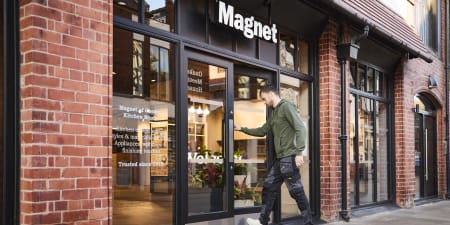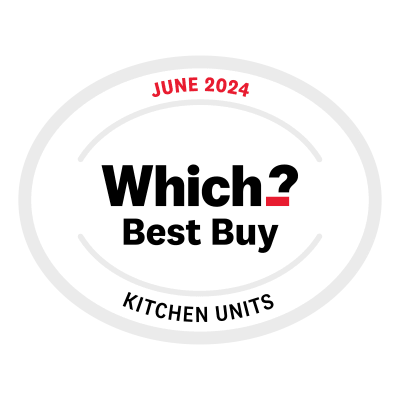Smart storage hacks to organise your kitchen and improve your wellbeing
Follow these simple steps to declutter your kitchen and create a space that makes you feel calm, organised and full of joy.
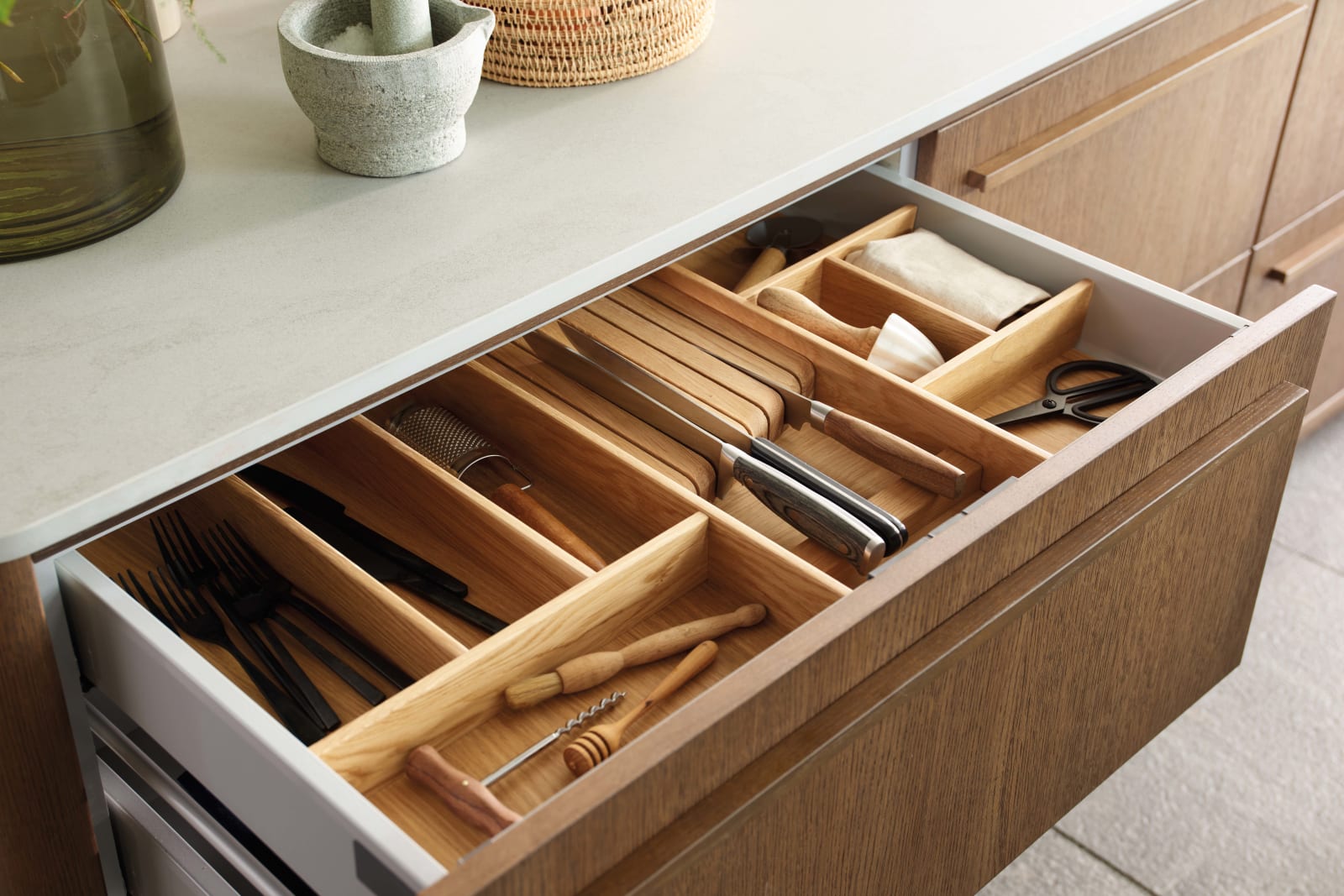
Do you ever look around your kitchen and feel overwhelmed by how much clutter there is? You’re not alone.
These days our kitchens are so much more than somewhere to cook – they also double up as home offices and classrooms, as well as places to eat and relax.
And with that comes all manner of belongings that can leave your kitchen looking cluttered and you feeling anxious and overwhelmed.
We all know the saying, "tidy home, tidy mind", and it really does ring true. If you can cut back on the clutter in your kitchen, you'll naturally feel happier and more content when you’re using the space.
Ever since Marie Kondo – the Netflix tidying expert – encouraged us to only keep items in our homes that ‘spark joy’, there’s been a growing movement for mindful home interiors.
The rationale is that, being more mindful of the way your home makes you feel will encourage you to create a more streamlined, organised place to live.
And clever storage plays a key role in that, as interior designer Lisa J Honiball, from Honey Interior Design, explains: ‘By having a dedicated space for everything you use in your kitchen, you will be able to find it exactly when you need it, which makes you feel efficient and calm.
‘Ensuring you have enough storage means that everything can be put away in its place – leaving surfaces clean and clutter free – helping you to feel calmer and able to enjoy your kitchen.’
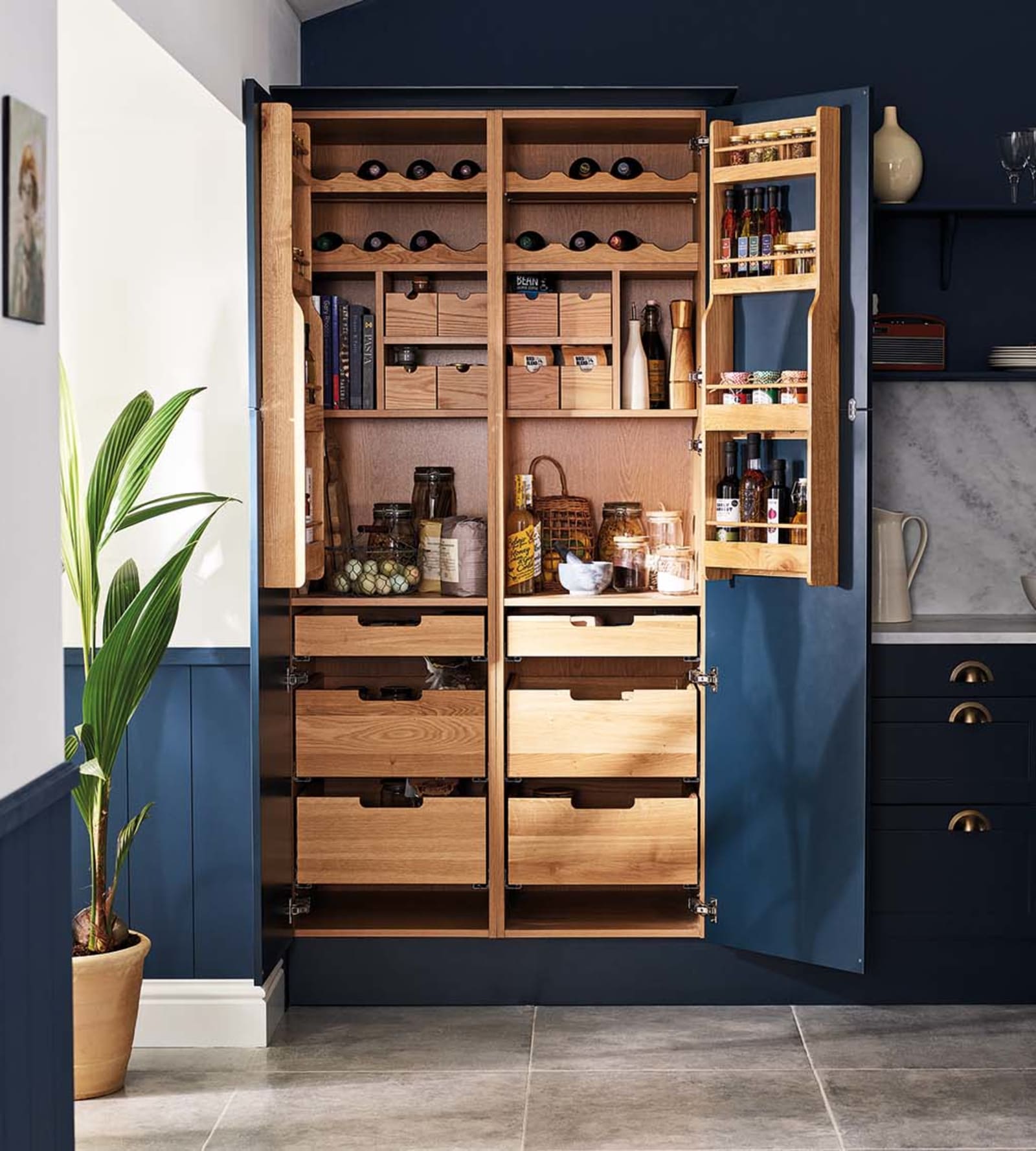
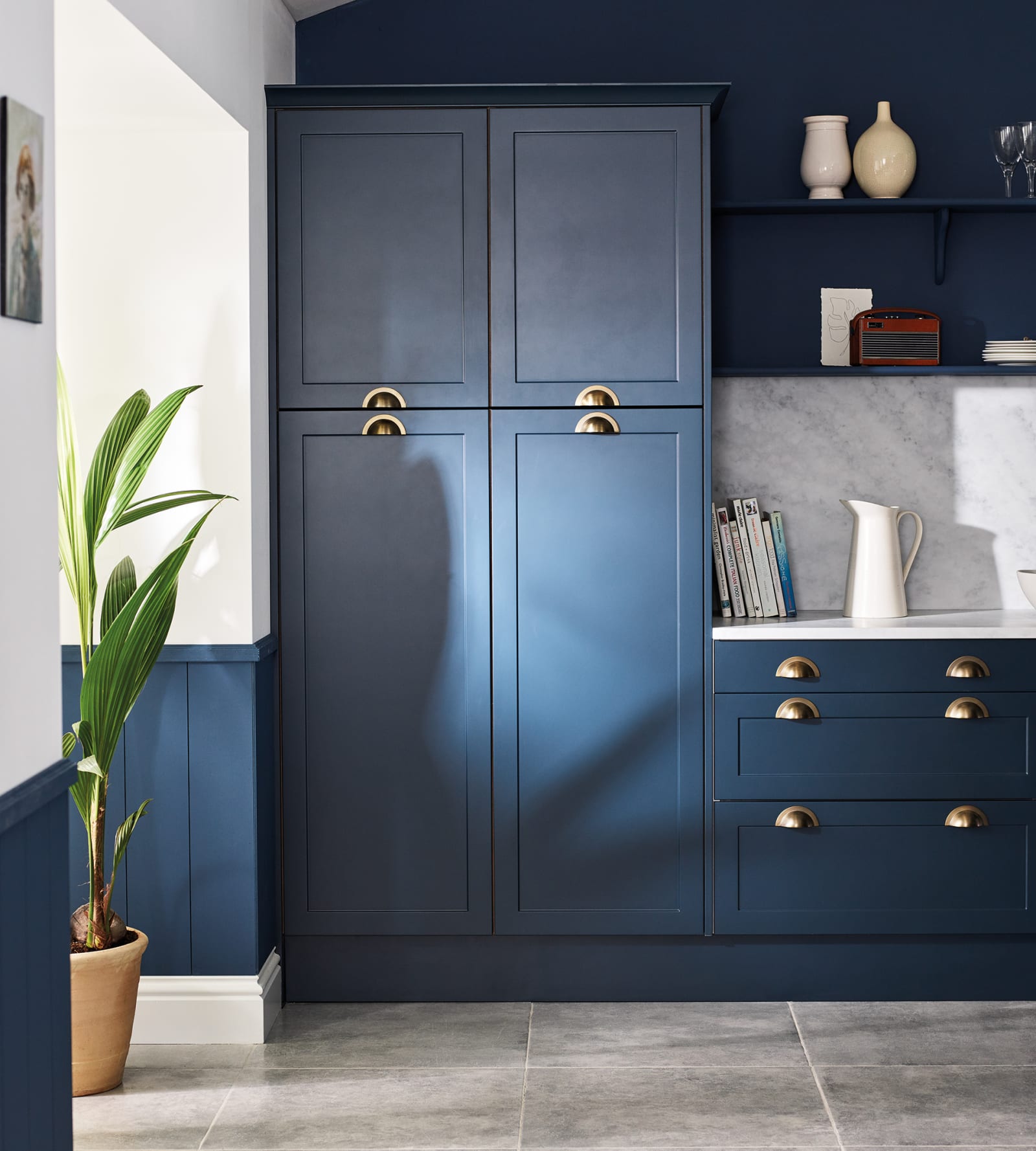

Clear the clutter
Before you start looking at storage solutions, you need to work out what you actually need to store in your kitchen and what you really don’t need anymore.
Work through your kitchen one drawer or cupboard at a time, taking everything out and seeing if you need to keep it.
By tackling the clear out in this way, Kondo believes you’ll feel less overwhelmed and more likely to complete the decluttering project.
"Split things into three piles," advises Lisa. "First, consider everything that is broken, has missing parts or is never used. This includes checking the use-by-dates on herbs and spices, which often linger in our cupboards for far too long. These things get thrown away.
"Secondly, you’ll know the items that you use all the time, day-in, day-out. It’s different for everybody, but these could include your favourite saucepans, your go-to vegetable peeler or the plates you use every evening. These things stay.
"The third group is probably the hardest – things that you don’t use very often. You really need to think through whether you need these items.
"Are you really using that fondue set? Could someone else give it a better home? It’s okay to keep things that are seasonal, but if space is tight, you might want to box it up along with your Christmas or Easter decorations, rather than store it in the kitchen."
Once you’ve streamlined your belongings – making sure to sell anything you don’t want or donate it to charity – it’s time to start thinking more carefully about how to store what’s left.
Start with shelving
Opting for a mix of open and closed storage is a great idea – open shelving and glass cabinets double up as both decoration and storage if you fill them with ornate jars, beautiful crockery and your best kitchenware.
This is where to pop your Le Creuset collection. Then you can use the closed cupboards for less aesthetically pleasing items.
When choosing shelves, opt for brackets that tie in with the other finishes in your kitchen. So, if you have on-trend brass taps and door handles on your units, choose brass wall brackets to support your shelves and it will create a cohesive feel. Black brackets are great for a more industrial feel.
Don’t forget to position a few plants on your shelves. By releasing oxygen, plants are great for our health as well as adding colour and texture to your kitchen.
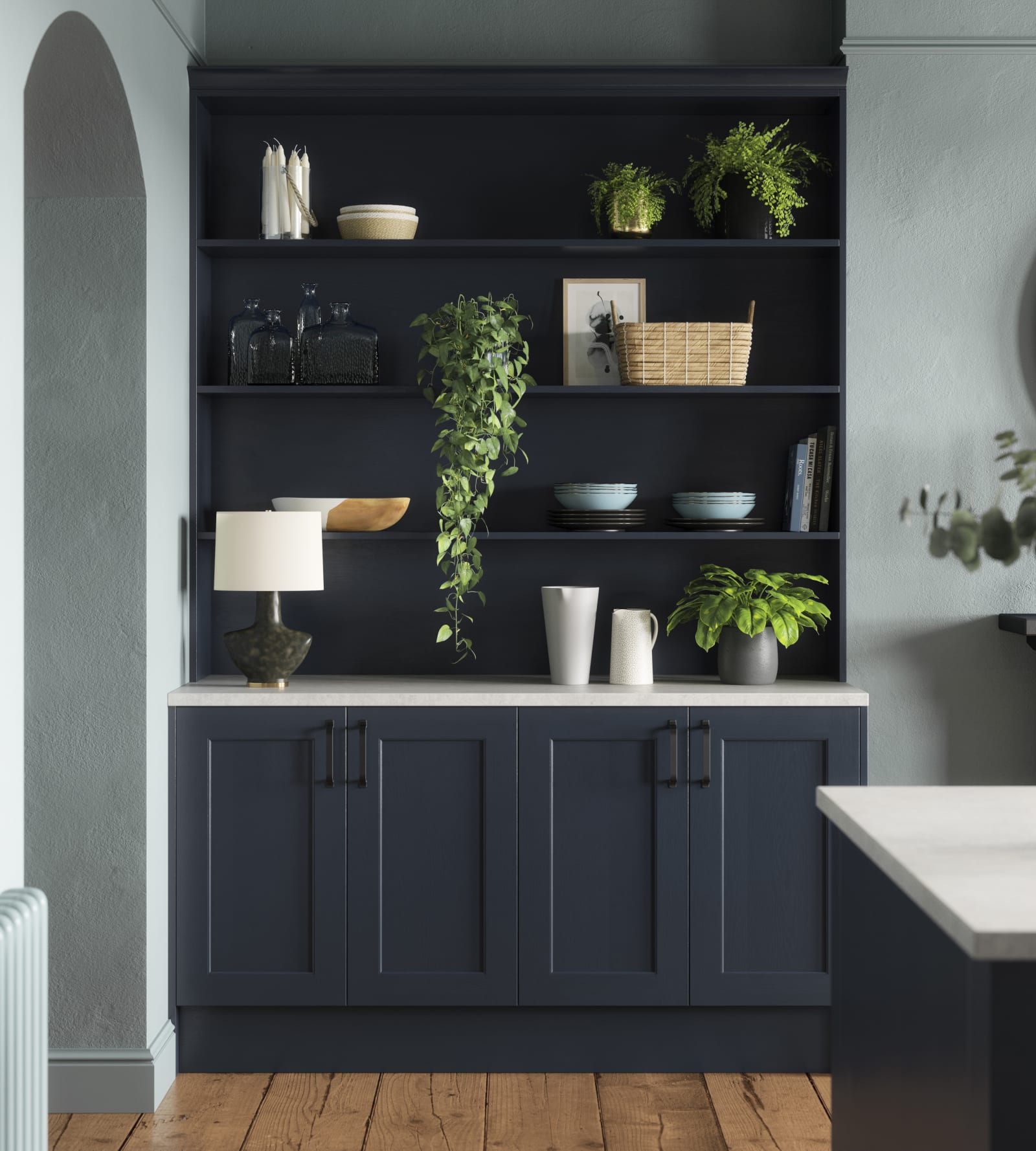
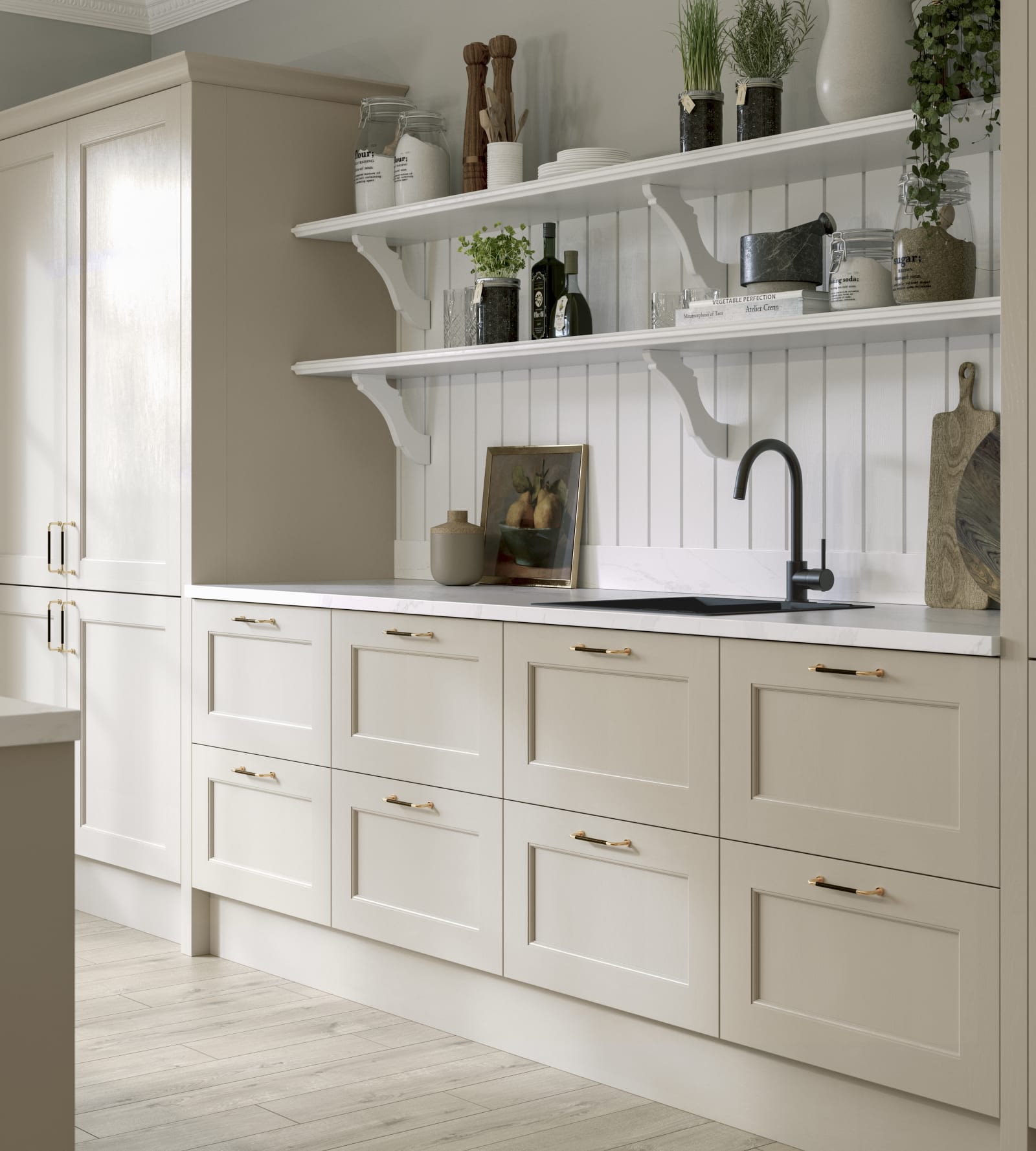

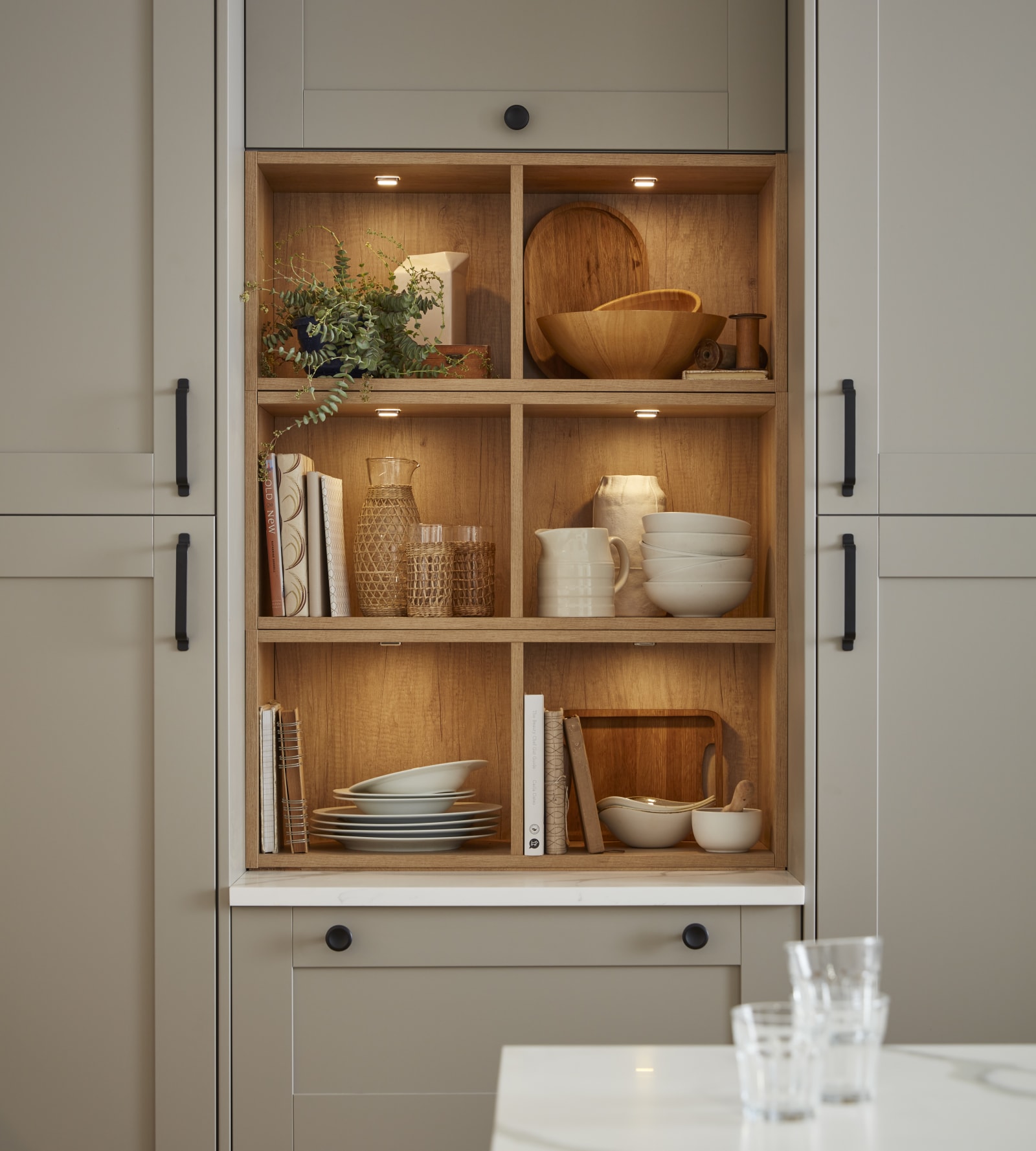
Invest in baskets and containers
Ever since Kondo revolutionised the way we store our belongings, sales of storage baskets and containers have soared.
In your kitchen, you can streamline the contents of your cupboards by decanting products into glass canisters or containers. This is a great way to reduce the amount of packaging you’re storing, especially on things like cereals, which usually come in bulky boxes.
Our fridges often end up harbouring half-empty jars and wilted salad leaves, so choose clear Perspex containers to keep things organised in there. By placing all the cheeses, cooked meats and leftovers together, you’ll know exactly where to find them when you need them.
Plastic baskets are great for storing cleaning products inside your units as any spills or leaks will be contained, protecting your units.
By keeping teabags, coffee and sugar in one basket too, it’s easy to locate everything you need for a hot drink.
Make the most of wasted space
What do you do with the area under your wall units? Chances are you use it to position your kettle, toaster and coffee machine, but there are far more efficient uses for the space.
Use this area to store items you cook with regularly, like olive oil, herbs and kitchen knives.
There are also ways to double the storage space available on your worktop. A storage unit that stands on your worktop creates a handy shelf, and is perfect for positioning fresh herb plants right next to your hob.

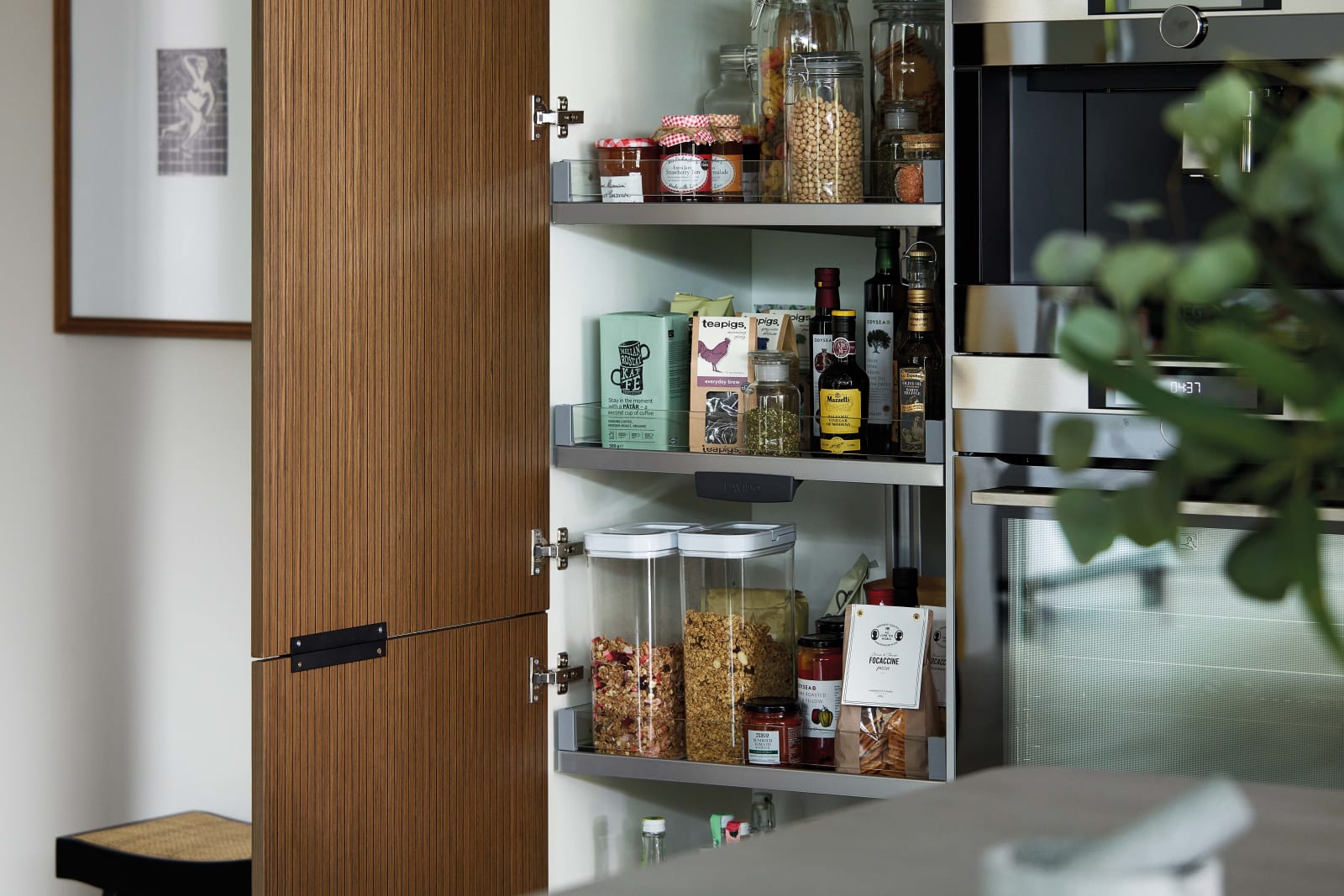
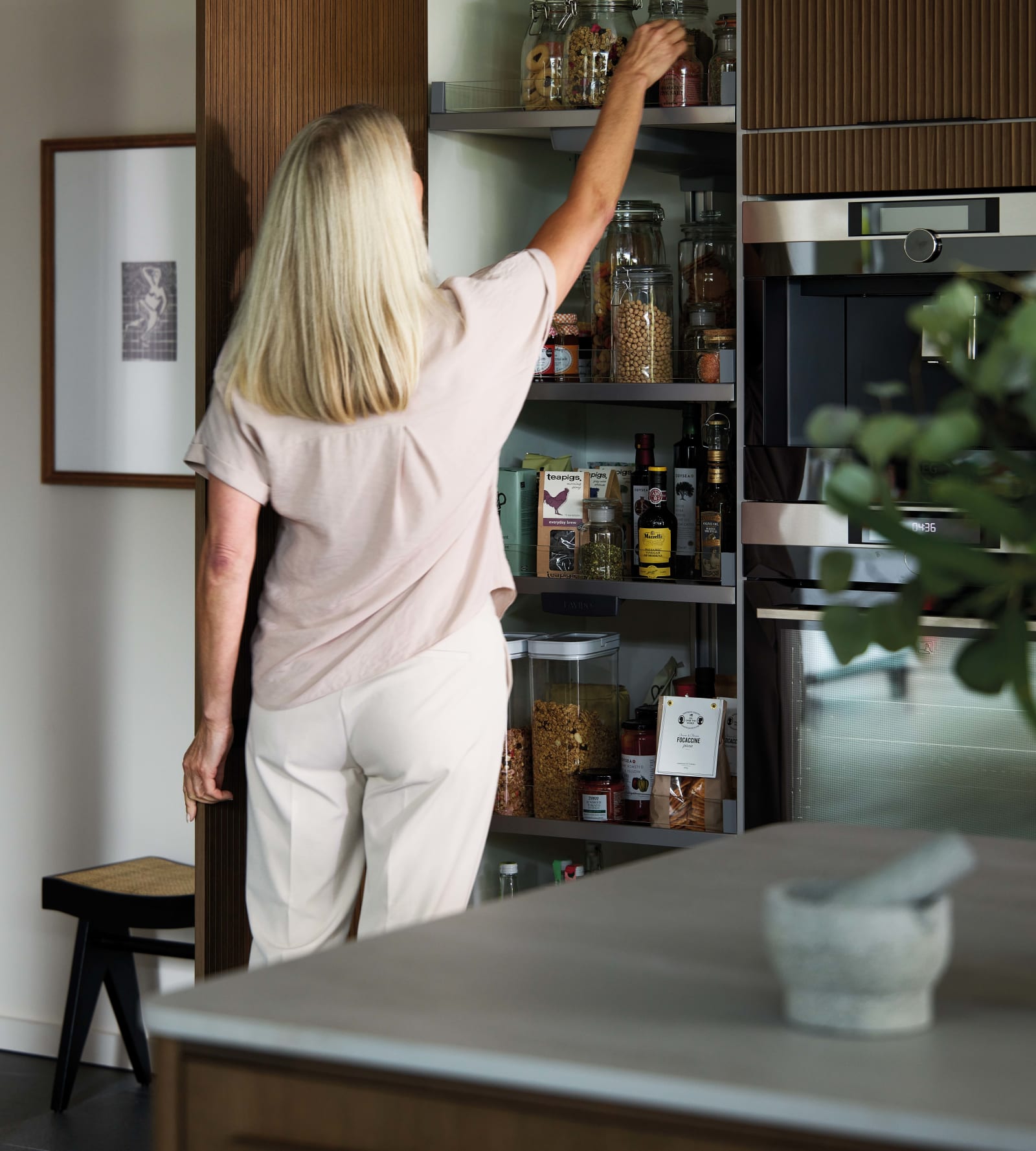
Fake your own pantry
Pantries are having a bit of a moment. They’re one of the most desirable kitchen features for 2021, but we don’t all have space for a walk-in pantry.
Instead, you can be clever with the space you do have to create your own mini pantry.
A pull-out larder unit can be squeezed into a narrow space but offers loads of easy-to-access storage. Alternatively, a wider larder unit like this, with dedicated racks for bottles and spices, plus drawers, is a great option.
And if you have got the space? Go all-out with a dedicated pantry with floor-to-ceiling shelves. You’ll be the envy of all your friends.
Opt for a moveable island
Think you don’t have room for an island in your kitchen? Think again. You can always create a similar effect with a pull-out worktop extender.
When it’s not in use this looks just like a kitchen unit, but it pulls out whenever you need it to provide extra worktop space and storage beneath.
Another option is a moveable butcher’s block on wheels, which is much more compact than an island but can still give you extra surface space and storage. Choose one in a contrasting colour to your units to make an impression.
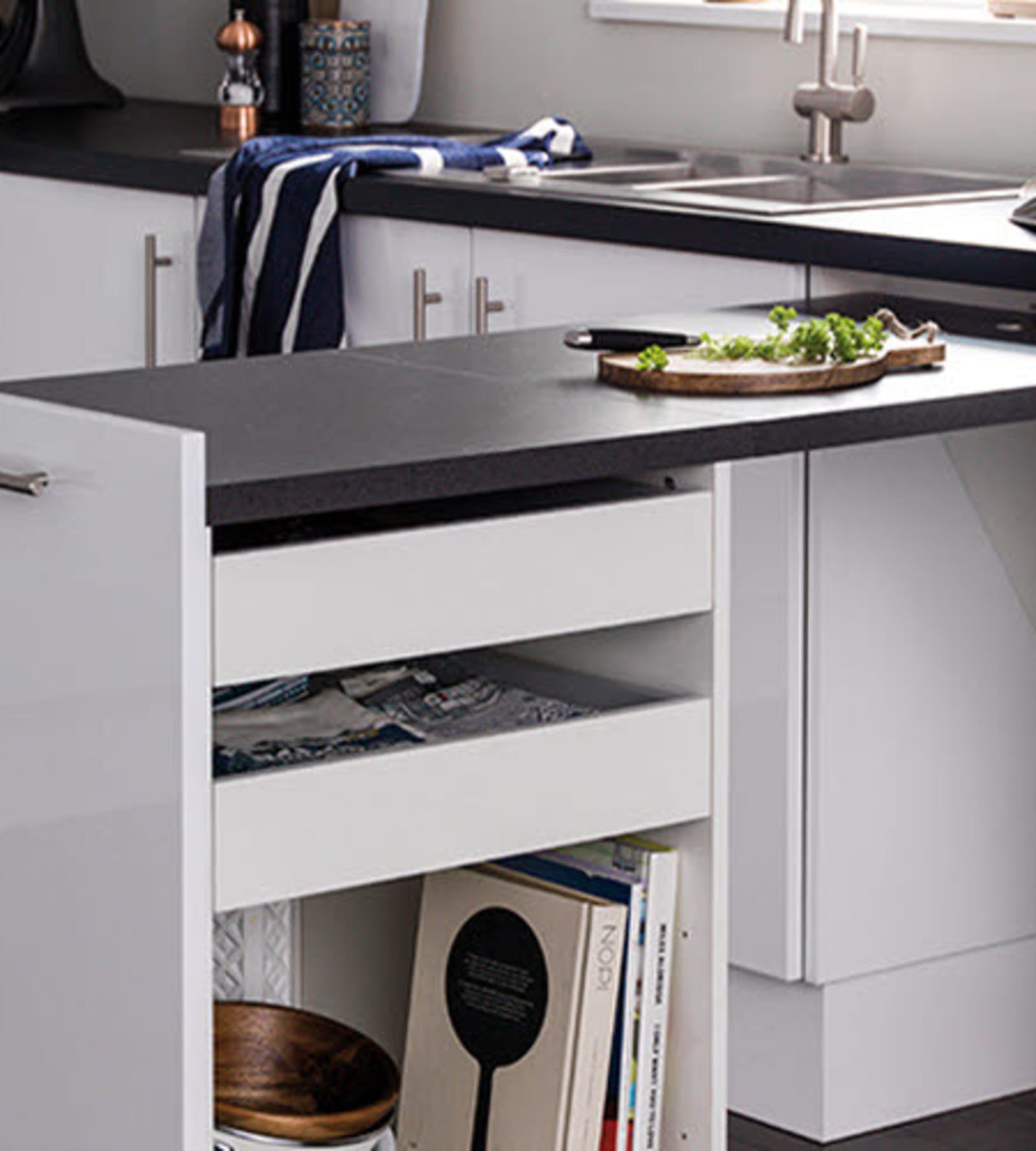
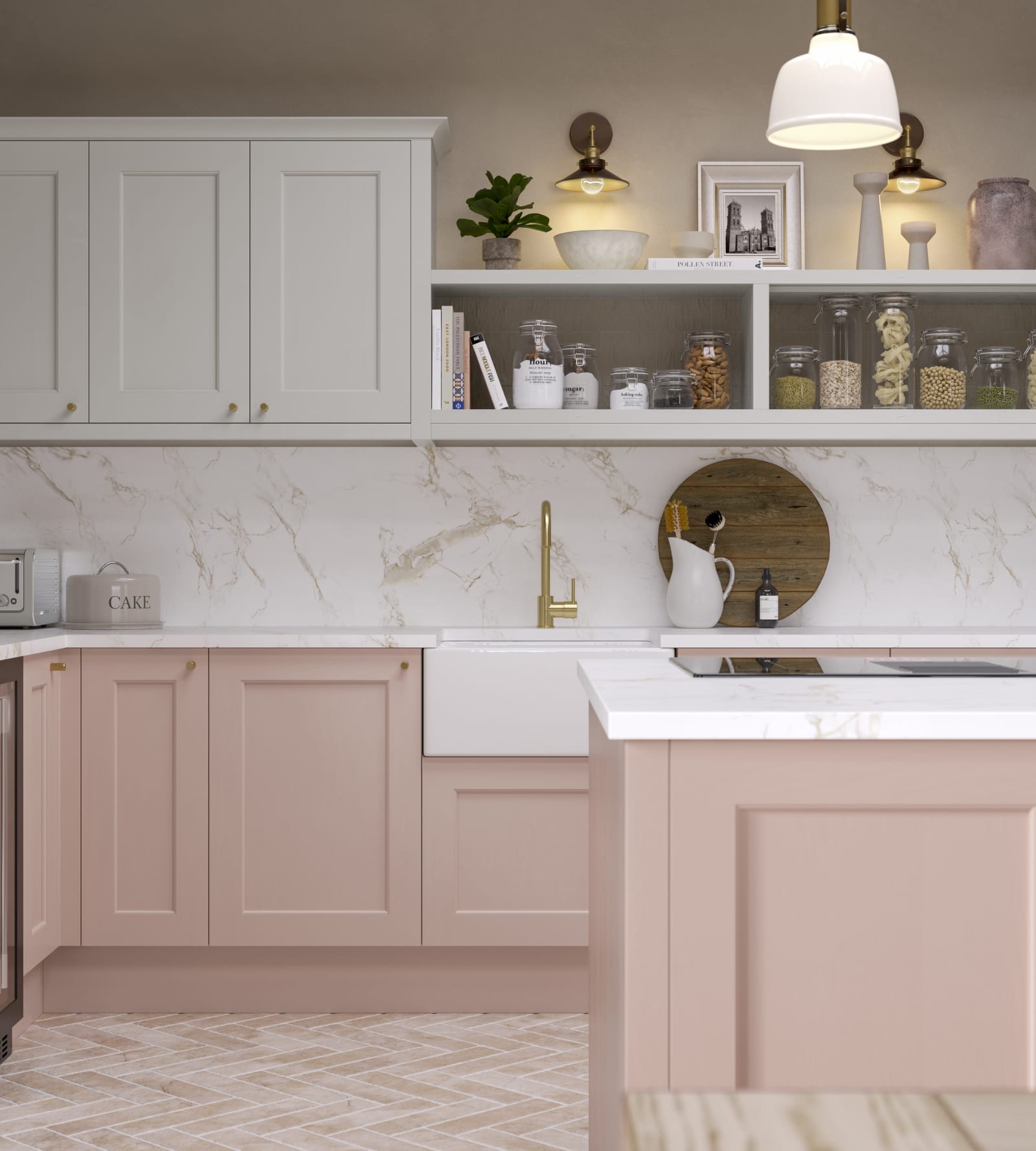
Get labelling
Do you ever delve into the freezer only to find you can’t tell the difference between your frozen spaghetti Bolognese or your chilli con carne?
Labelling has become super popular over the last few months and you can buy your own label machine to print off personalised tags to use on items throughout your home. These are perfect for labelling up your new storage containers and also for keeping track of what’s in your freezer.
If printing off labels sounds like too much hard work, then use liquid chalk markers or a Sharpie to write directly onto containers, just like The Home Edit has here.
Say goodbye to the kettle
Kettles take up valuable worktop space, are noisy to use and aren’t the most efficient way to heat water. Instead, consider investing in a boiling water tap.
These are becoming the norm in contemporary kitchen designs but can also be retrofitted into an older kitchen too.
The latest taps don’t just provide boiling water, but also regular hot, cold and even filtered water, too. You’ll clear some worktop space and never have to wait for the kettle to boil again – what’s not to like?



Choose smarter device storage
Why is it that you can never find the right charger for the device that’s low on battery?
Whether it’s your mobile phone or iPad that’s running dangerously low on battery, you can guarantee that you’ll discover somebody has moved the charger at the exact moment you need it most.
Luckily, there are a few simple solutions to keep things organised. You could ask your electrician to install a couple of sockets inside one of your kitchen cabinets where you leave chargers and charge devices out of sight.
You can also solve the problem with a USB charging tray, like this, that neatly slots into a kitchen drawer.






















